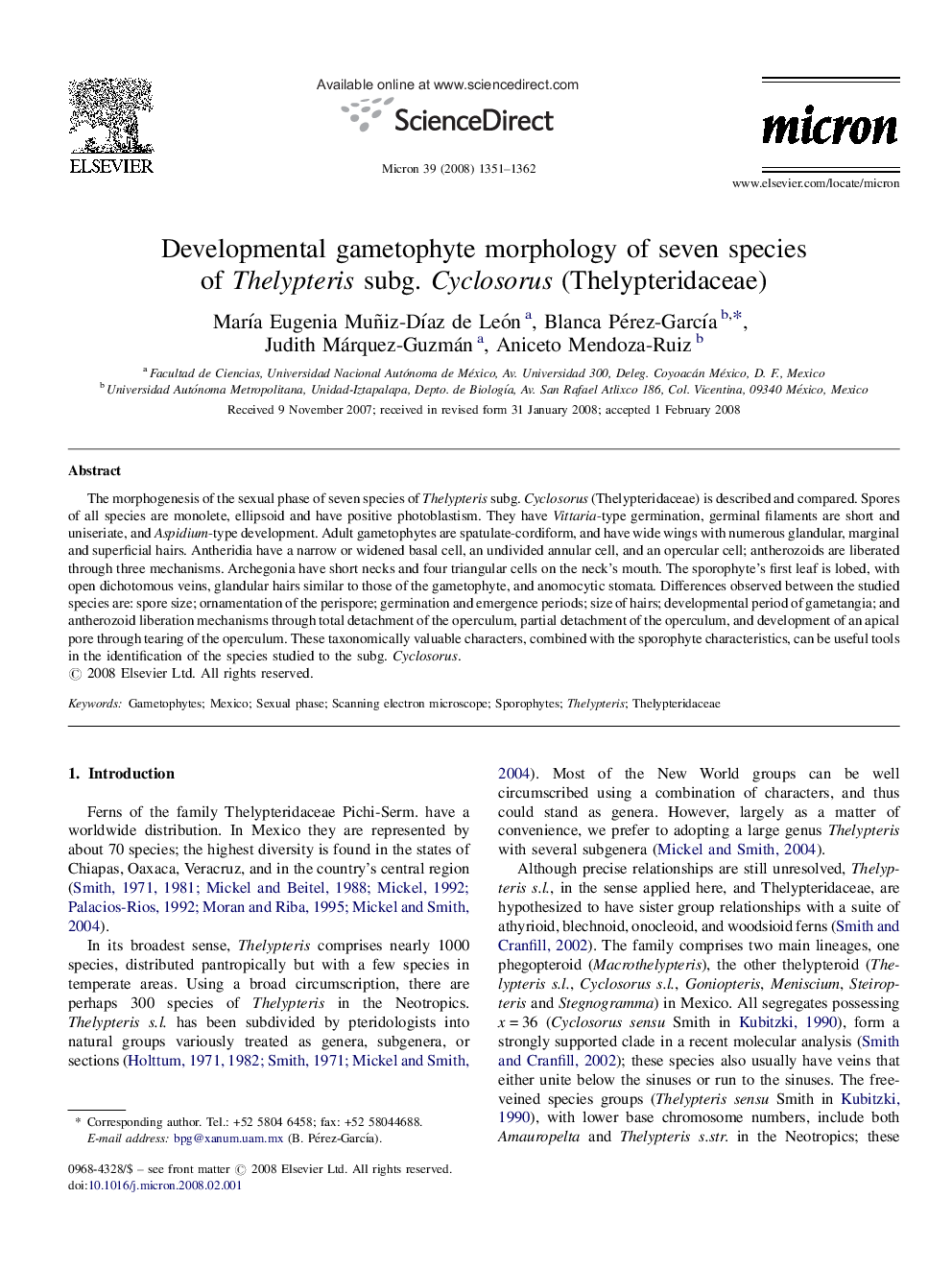| Article ID | Journal | Published Year | Pages | File Type |
|---|---|---|---|---|
| 1589713 | Micron | 2008 | 12 Pages |
Abstract
The morphogenesis of the sexual phase of seven species of Thelypteris subg. Cyclosorus (Thelypteridaceae) is described and compared. Spores of all species are monolete, ellipsoid and have positive photoblastism. They have Vittaria-type germination, germinal filaments are short and uniseriate, and Aspidium-type development. Adult gametophytes are spatulate-cordiform, and have wide wings with numerous glandular, marginal and superficial hairs. Antheridia have a narrow or widened basal cell, an undivided annular cell, and an opercular cell; antherozoids are liberated through three mechanisms. Archegonia have short necks and four triangular cells on the neck's mouth. The sporophyte's first leaf is lobed, with open dichotomous veins, glandular hairs similar to those of the gametophyte, and anomocytic stomata. Differences observed between the studied species are: spore size; ornamentation of the perispore; germination and emergence periods; size of hairs; developmental period of gametangia; and antherozoid liberation mechanisms through total detachment of the operculum, partial detachment of the operculum, and development of an apical pore through tearing of the operculum. These taxonomically valuable characters, combined with the sporophyte characteristics, can be useful tools in the identification of the species studied to the subg. Cyclosorus.
Related Topics
Physical Sciences and Engineering
Materials Science
Materials Science (General)
Authors
MarÃa Eugenia Muñiz-DÃaz de León, Blanca Pérez-GarcÃa, Judith Márquez-Guzmán, Aniceto Mendoza-Ruiz,
